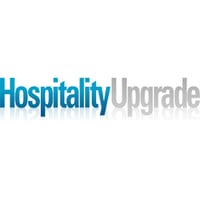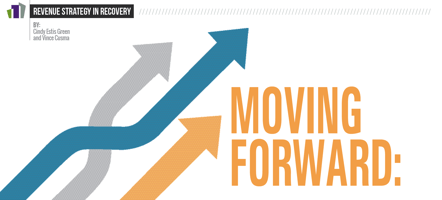Distribution Strategy: Shifting Share in a Competitive Market Most hotels in the United States...
Published Articles
HSMAI Section: When Should a Hotel Take Low Profit Margin Business?
HSMAI Section: When Should a Hotel Take Low Profit Margin Business?
There is a lot of discussion about the wide ranges of cost between the many sources of business available to most hotels. The reality still exists that a hotel has to fill with many types of business.
A marketer may be inclined to assume it is best to choose channels in order of cost, but there are other variables to consider.
It is rare that a hotel can sell all room demand volume at top price. Hotels have to layer in their business to try to find the highest-rated demand at any given time. Hotel management needs to identify all the demand available in a market and figure out how much they want from each demand driver and how much they can afford to acquire the share they want. The hotel needs to consider all of its room and rate types and match them with the types of business available at any given time.
There will always be lean times when it is only possible to fill a hotel with business that may be lower profit than a hotel would prefer to take. Therefore, in spite of higher acquisition costs, if the room is being sold at a profit, even a small profit, and there is no business flowing through higher value channels, then it may be worth using the higher cost distribution channel. If there is no profit from a particular type of business, then in most cases, this practice may not be worthwhile. It is management’s role to decide how many rooms should be available through each channel based on daily demand forecasting for each part of the week and each season of the year. If a hotel is obliged to sell through marginal channels during high demand times, in order to gain access to those channels during need periods, a cost/benefit analysis would be in order to assure management that there is a net benefit overall after analyzing the composite of all demand periods.
1. Create a Base for Compression
If low-margin room nights can be laid in early enough to add to a base that creates a higher level of compression in the market in which the hotel is operating, then it can serve as a springboard to yield more bookings from higher rated customers during the peak booking lead time. For example, if there is a way to stimulate low rate paying customers to book in the 21-40 day lead time window, then it can prove valuable to a hotel by enabling higher rates for business booked within two weeks of the arrival date. Many hotels can make the mistake of using low-profit channels without regard for lead time and end up filling in with low rates closer to arrival; this contributes to the impression by consumers in the marketplace that you can get a better rate if you wait until the last minute. This behavior has been reinforced by media messaging where waiting for a lower last-minute rate is the explicit theme.
Traditionally, hotels would be best served by booking their lower rated business further out so they can push rates up closer to arrival when demand is likely to be highest. If a hotel avoids taking lower rated business earlier, and then offers last-minute low rates in the last week or two: (1) the percentage of higher rated business will decline overall and (2) travelers learn that waiting can guarantee lower rates so the consumer is less inclined to book early even when lower rates are available.
2. Bring Business You Can’t Bring Yourselfs
Assuming the rates yield a contribution to profit, low-margin business is worthwhile if the hotel benefits from a valuable market it is not capable of tapping itself, either due to technical issues or access. If it diverts business that would come otherwise through a hotel’s own website or call center, then it may not be worth incurring a higher cost. However, as an example, for those hotels in a market that is attractive to international feeder markets, or to fly-in markets in which air/hotel packaging is a major source of demand, then third-party intermediaries specializing in packaging can be valuable channels of choice, provided there is no feasible alternative to getting that business through a higher margin channel.
3. When Ancillary Spend is High
For hotels with strong potential for ancillary spending beyond the room rate (i.e., revenue centers such as parking, premium internet services, golf), and that ancillary spend carries a high profit margin, the full benefit of that booking should be considered when evaluating the business. Even if the contribution to profit from the room rate is small, if the ancillary spend yields a substantial profit contribution, then low-margin business can be an attractive option for a hotel. However, it should be compared to alternatives to determine if it is still more beneficial than other demand streams available in the same time period.
4. Hit the Threshold
Some hotel brands set threshold occupancy levels that trip a premium in reimbursement to hotels for loyalty point redemption. When a hotel is near that threshold (e.g., 95 percent occupancy), it chooses to top off and hit that mark by taking the lower rated and marginally profitable business, often through the OTA channel, in order to qualify for the much higher reimbursement from the brand loyalty program. Feeling like a game of “whack-a-mole,” where a wide range of demand may pop up in a few channels given a busy period in a particular market, this short-term quick fill may sometimes be a diversion of bookings that would have come through brand.com. Although not ideal, being a quick fix and a reliable way to siphon off any last-minute demand coming into a market by the hotel that wants to hit the threshold, it works.
5. Fill a Hole
When a large group cancels or a citywide event does not fill a hotel as expected, the mass marketing benefit of a third-party intermediary can be highly effective at plugging those holes for a given hotel, especially when they are unexpected and/or offer little lead time to launch other marketing initiatives to a large audience. The third-party sites are adept at share shifting and one needy hotel may turn on the spigot that will direct much of the demand for a comp set to it during these need periods.
6. Cover Cash Flow
If a hotel is in a desperate situation in which it can’t reach its threshold of daily operating expenses, then lower margin business can still serve as “fast cash” to cover cash flow needs. This is not often a sustainable situation, but it is a method that a hotel can use when no other option exists, either because it does not have the internal skills to stimulate other demand sources, or because the market is so economically depressed that there is no other option to shift the limited existing demand. However, it is often a case where one hotel in a comp set gains volume, but due to limited demand, all of them rarely do. The tendency is for the hotel taking the lead in the market to lower rates, followed by the others in the comp set who feel they have to drop rates to avoid loss of market share. In the worst case, when all hotels have lowered rates, the only method to gain the limited demand in the comp set requires continual rate reductions and all hotels have to operate at lower margins; some call this a “race to the bottom.”
Over time, without adequate business that yields a positive contribution to profit, the owner is likely to have a shortfall precluding the ability to meet debt service, tax obligations, or to have any funds to reinvest. A disproportionate share of low margin business can cause excessive wear and tear on the building and in short order, in a downward spiral, the hotel will not be able to justify high enough rates to deliver a profit even when the economy improves. This situation requires careful consideration by management and tight controls so that as soon as more profitable channels are flowing, the hotel can widen the range of channels from which it fills the hotel.
Low-profit Business — How Much Should a Hotel Take?
But how much of the mix should the low-profit business be? The hotel has to be cautious about volumes so it does not displace full-rated business by selling too large a base at low rates months before arrival. There is also a question as to whether a hotel can fill the same rooms with other demand that contributes more to net operating income (NOI). If not, when the hotel has achieved its break-even point with a sufficient volume of rates close to a targeted best available rate (BAR), then some contribution can be better than none. Low-value business may become a detriment to the hotel’s achievement of an optimal business mix if it:
. Becomes too large a percentage of the hotel’s overall channel mix.
. Diverts financial or staff time and resources from seeking higher profit business.
. Erodes the overall rate strategy of the hotel.
. Feeds a downward price spiral in the comp set that reduces rates for all and does not bring in enough incremental demand to compensate for the reductions in rate.
. Diverts customers who would otherwise book through higher value channels.
. Is promoted close to arrival and trains consumers to wait until the last minute for the best deal, undermining the potential for high rates that may be booked at the same time.
A more granular way to conduct this analysis could be to examine a hotel’s revenue stream by day of week. A comparison of residual profit at different ratios of low and high-value business could help determine the extent to which the hotel would benefit overall from some percentage of low-rated business used to “top off” during the high occupancy days. The danger is consistently taking too much low-profit business as part of the break-even base and undermining the hotel profit.
If a hotel has no last room availability (LRA) commitments, base allocations or conditions connected to low-value business that would be detrimental to revenue during peak times, accepting a wide range of rates to take advantage of the demand in the market may prove beneficial to optimize revenue. However, if there are restrictions on inventory or if a particular type of business demand is not contributing to profit at all, a cost/benefit analysis would be appropriate to factor in the rate erosion during peak times as a deduction from the benefit gained during periods of weak demand.
Cindy Estis Green is the CEO and co-founder of Kalibri Labs, a Big Data company that benchmarks hotel revenue performance net of customer acquisition costs. She can be reached at cindy@kalibrilabs.com.
Read the full article on Hospitality Update
©2017 Hospitality Upgrade
This work may not be reprinted, redistributed or repurposed without written consent. For permission requests, call 678.802.5302 or email info@hospitalityupgrade.com.




